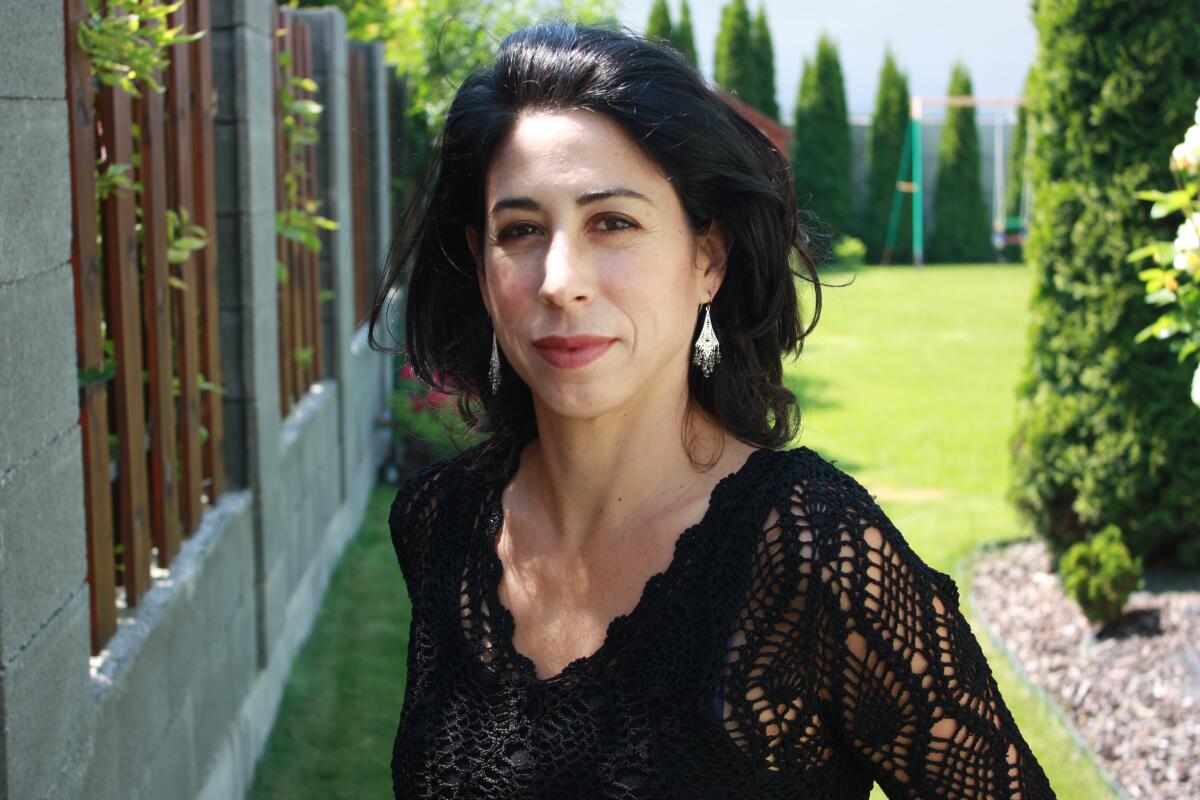A Miami apartment comes to life — literally — in Ana Menéndez’s history-rich novel

Review
The Apartment
By Ana Menéndez
Counterpoint: 240 pages, $27
If you buy books linked on our site, The Times may earn a commission from Bookshop.org, whose fees support independent bookstores.
One of my favorite books of the last decade is Cristina García’s “Here in Berlin,” a novel in stories about that European capital’s many-layered and often tragic past, told by a narrator known only as the Visitor. I was reminded of it by Ana Menéndez’s intense and emotional new novel in stories, “The Apartment.”
The difference — the first book spanning a metropolis, the second confined to a dwelling — is telling. While García uses fictional interviews to excavate a city’s culture, Menéndez uses a single flat — Apartment 2B in an Art Deco complex in Miami, to be precise — to lay down a palimpsest of history through its charged materials, beginning in the distant past with an Indigenous woman gathering sea turtle eggs and proceeding through a succession of tenants over the last century. (Menéndez, born to Cuban exiles in Los Angeles, is also the author of the novel “Loving Che,” the story collection “In Cuba I Was a German Shepherd” and two other books.)
The paint on the walls of 2B is fresh when Sophie and Jack Appleton cross the threshold — newlyweds whose attraction for each other is enhanced by the adrenaline of wartime: “Sophie thinks she understands why men go to war, generation after generation: war is a thrilling break in the routine of every day.” Pearl Harbor has just been bombed, and Jack, an Army major, has been assigned to Miami because no one knows which part of the United States might be attacked next. Unfortunately, Jack’s caged-up aggression finds a convenient outlet in Sophie’s vulnerability. It’s a sad and truthful way to bring the apartment to consciousness.
“Of Women and Salt,” tracking generations of Latinas, comes out of Gabriela Garcia’s family story, life experience and advocacy for migrants.
Menéndez wants you to see the unit itself as a character that connects the tenants’ stories, a repository of different kinds of energy: Cruelty, dreams, lust, creativity, loneliness. Brief interstitials signify 2B’s experiences and lingering emotions. First, after the Appletons leave (we’ll never know when or why), the apartment’s “unseen eye” sweeps the walls, taking in even a drop of paint Sophie spilled one tense afternoon. After a Cuban classical pianist departs, time, “not arrow, but snake,” reveals Florida pine floorboards leached by the sun. In 1972 comes a squatter known as Sandman, a Vietnam vet whose wife sends him packages, trying to tether him back to life, of things like his football jersey and lava lamp: “Slowly the objects took up residence in the place, as if the apartment itself were a living thing, lighting up with memories.”

Sentences like that prove more effective in bringing the rooms to life than the sometimes ineffable interstitial business. (Though a conversation between two contractors prepping the place for the next tenant is fleet and funny.) From 1982 through 1994, we hear nothing from the apartment except that it “settles into itself” while its rooms are “rarely empty”:
“No one thinks that homes also need pauses, pockets of silence. Homes also need time to gather themselves, time to simply rest. All that sheltering and holding, that gets exhausting.” And then, Apartment 2B dreams it is a castle: “Homes also … shelter themselves … refracting and re-forming … the rooms connect one to another like diamonds on a string, infinite.”
The connections make clearer sense when you realize the ideas in Menéndez’s inanimate narrative voice derive from psychology and the human need for a home base. 2B dreams its dreams, we realize a bit later, while it houses a young man named Lenin Garcia. Named by his Cuban parents in a moment of revolutionary fervor, Lenin arrived in Florida with nothing and learned to survive through sex work.
Fernanda Melchor, Mexican author of such acclaimed novels as “Hurricane Season” turns to nonfiction with stunning success in “This Is Not Miami.”
We meet Lenin through Armando, the building manager, himself an immigrant from Cuba, and then through another apartment dweller, Ana Kralova, an immigrant from what was then Czechoslovakia. By that time, we know Lenin has not survived, and we know that this is less the story of a sensate apartment than it is the story of a ghost. Prior tenants may have left behind drips of paint, uncleaned appliances or unresolved feelings, but only Lenin will remain as a person, albeit in spirit form.
Ana, having experienced life behind the Iron Curtain, has complicated emotions about her neighbor’s death: “It was just a suicide, the police said. One of many in this town. The policewoman, in a kind voice, said she was sorry — an English construction Ana had never been able to accept. What was there to be sorry about? As if the bad that happened always had to be someone’s fault.”
Finally, in 2012, we meet Lana — another Cuban exile who grew up in need. But Lenin, a “trigueño, like the father I never knew,” understands that there are deprivations worse than physical hunger. Lana, a painter, tries hard to resist her Egyptian-born neighbor Miriam’s offerings of cake and food and flowers. She eventually starts to play Bananagrams with Yolanda, is introduced to the aged Candelaria, and so on, as Lenin at last speaks from the walls in his American purgatory. And purgatory it is, because Lenin has a reason for his haunting, even though he doesn’t know it any more than the living do.
It’s in this last, sumptuously detailed story that the author allows us to understand that she’s been writing about the universal longing for home and the ways in which we identify it, occupy it and lose it. A wise woman tells the 15-year-old Lenin, before he reaches Miami, that “the ancestors speak to you from the home of your inner life. When your inner life is spare, there is nowhere for the ghosts to sit. When you furnish your spirit, the ancestors will once again find rest in you.”
Tess Gunty’s novel, “The Rabbit Hutch,” follows a brilliant, troubled young woman and charts American decline. The writer’s journey is another story
Life will continue in the apartment, its door forever open to restless souls, holding out hope of home through human communion. Menéndez has given life to a place both indistinct and emblematic, mining private pain but spreading positive energy in a building — in a city and a country — that could use a lot more of it.
Patrick is a freelance critic, podcaster and author of the memoir “Life B.”
More to Read
Sign up for our Book Club newsletter
Get the latest news, events and more from the Los Angeles Times Book Club, and help us get L.A. reading and talking.
You may occasionally receive promotional content from the Los Angeles Times.









